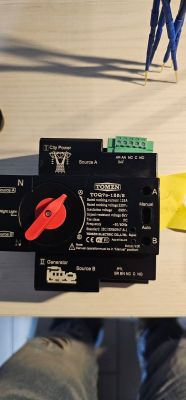I am renovating the house, electrics completely from scratch. I will add automation on ESP/Adriono/Sonoff/Shelly. The automation will control lighting and maybe heating, recuperation, maybe etc.... broad plans. Right now I'm doing the switchgear and I want to make it work the old way and then slowly switch to my automation, motion sensors etc.... My vision is as follows:
1. from sockets, light points and switches the cables come together in the switchboard.
2. in the first stage, bistable relays switch lights controlled from bell switches
I don't have a blueprint (apart from the concept in my head), so I don't really know how many ESEKs I'll need in the switchboard (I don't want to count it now), I thought of terminating all the cables from point 1 on the ZUGs in the switchboard and then quietly untangling them. ZUG's that look decent and take up little space are WAGO, like these:
https://www.wago.com/pl/z%C5%82%C4%85czki-lis...wa-z%C5%82%C4%85czka-instalacyjna/p/2003-7646
Do you think this is a good solution as a ZUG in the switchgear?
Any disadvantages of these connectors apart from the price? (At my local wholesaler they are 8.5zl/unit)
1. from sockets, light points and switches the cables come together in the switchboard.
2. in the first stage, bistable relays switch lights controlled from bell switches
I don't have a blueprint (apart from the concept in my head), so I don't really know how many ESEKs I'll need in the switchboard (I don't want to count it now), I thought of terminating all the cables from point 1 on the ZUGs in the switchboard and then quietly untangling them. ZUG's that look decent and take up little space are WAGO, like these:
https://www.wago.com/pl/z%C5%82%C4%85czki-lis...wa-z%C5%82%C4%85czka-instalacyjna/p/2003-7646
Do you think this is a good solution as a ZUG in the switchgear?
Any disadvantages of these connectors apart from the price? (At my local wholesaler they are 8.5zl/unit)









 .
.